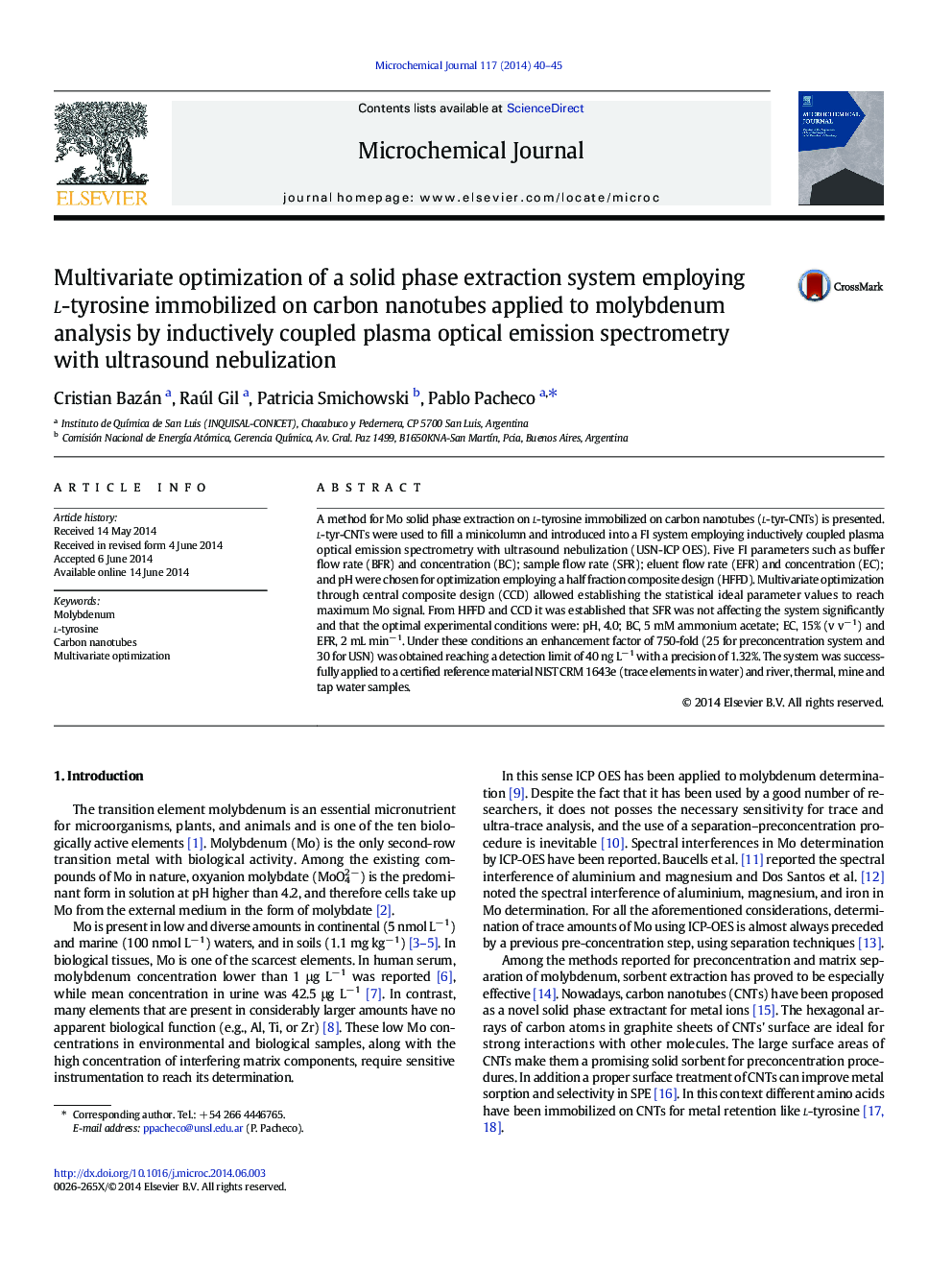| Article ID | Journal | Published Year | Pages | File Type |
|---|---|---|---|---|
| 7642712 | Microchemical Journal | 2014 | 6 Pages |
Abstract
A method for Mo solid phase extraction on l-tyrosine immobilized on carbon nanotubes (l-tyr-CNTs) is presented. l-tyr-CNTs were used to fill a minicolumn and introduced into a FI system employing inductively coupled plasma optical emission spectrometry with ultrasound nebulization (USN-ICP OES). Five FI parameters such as buffer flow rate (BFR) and concentration (BC); sample flow rate (SFR); eluent flow rate (EFR) and concentration (EC); and pH were chosen for optimization employing a half fraction composite design (HFFD). Multivariate optimization through central composite design (CCD) allowed establishing the statistical ideal parameter values to reach maximum Mo signal. From HFFD and CCD it was established that SFR was not affecting the system significantly and that the optimal experimental conditions were: pH, 4.0; BC, 5 mM ammonium acetate; EC, 15% (v vâ 1) and EFR, 2 mL minâ 1. Under these conditions an enhancement factor of 750-fold (25 for preconcentration system and 30 for USN) was obtained reaching a detection limit of 40 ng Lâ 1 with a precision of 1.32%. The system was successfully applied to a certified reference material NIST CRM 1643e (trace elements in water) and river, thermal, mine and tap water samples.
Related Topics
Physical Sciences and Engineering
Chemistry
Analytical Chemistry
Authors
Cristian Bazán, Raúl Gil, Patricia Smichowski, Pablo Pacheco,
